N/A
Carlos Rodon
Nobody Is Innocent as MLB Cracks Down on Pitchers Using Sticky Stuff
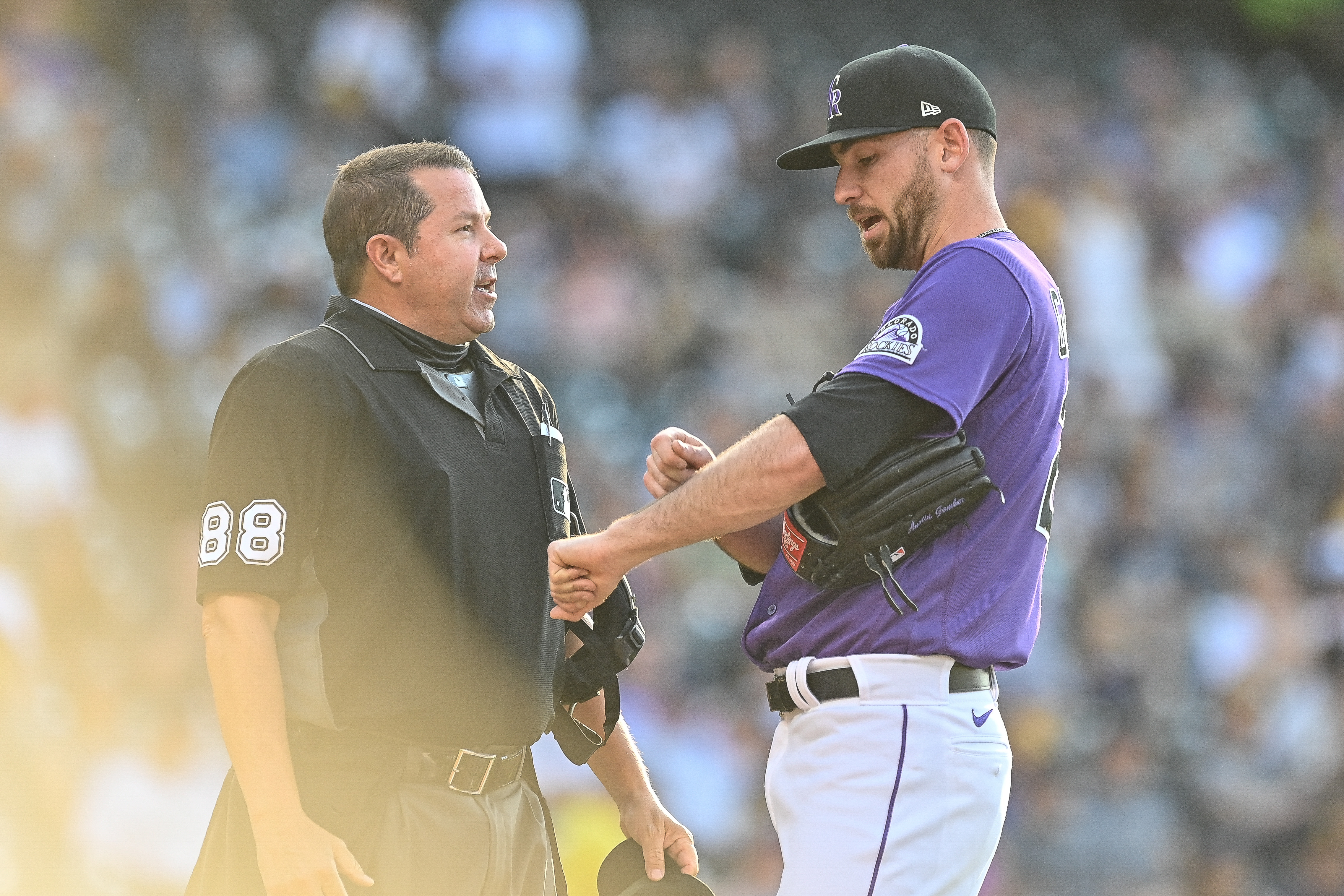
Now that Major League Baseball's crackdown on foreign substances is finally here, all sorts of potentially avoidable Hell is poised to break loose.
After first warning pitchers in March that it was drawing a line on pitchers applying pine tar and other sticky stuff to the ball, MLB is now set to enact a new set of protocols that are meant to enforce Rule 6.02(c)(7).
According to Anthony Castrovince of MLB.com, starting pitchers and relief pitchers are now subject to at least one mandatory inspection by umpires per game. If a pitcher is found to have applied a foreign substance or even be in possession of one, he'll be immediately ejected and automatically suspended for 10 games.
Per Bob Nightengale of USA Today, these new protocols will go into effect on June 21.
Unsurprisingly, the mood among the league's pitchers right now is one of outrage.
Tampa Bay Rays right-hander Tyler Glasnow, for example, pointed to the crackdown as the likely cause of injuries to his ulnar collateral ligament and flexor tendon. Chicago White Sox left-hander Carlos Rodon, meanwhile, sees a cognitive dissonance in relation to MLB's handling of the Houston Astros sign-stealing scandal:
But while Glasnow, Rodon and other pitchers who are ticked about MLB's new protocols have a gripe, they aren't the good guys in a situation where frankly there aren't any.
How Pitchers Brought This on Themselves
Pitchers can hate MLB's new enforcement policy all they want, but the average hitter is bound to have a different take that can be summed up in four words.
It's about freakin' time.
After all, it's not as if MLB is only now outlawing pitchers from doctoring the ball. The league first banned pitchers from using spit, resin and other substances ahead of the 1920 season, in which Carl Mays killed Ray Chapman with a wayward spitball.
For decades after the fact, however, there was an unspoken agreement between pitchers and hitters that the use of foreign substances was fine so long as the pitcher was merely trying to get a better grip. In those instances, the only real crime was being too obvious about it.
The arrival of Statcast in 2015 changed everything, specifically by introducing the term "spin rate" into the popular consciousness.
Because more spin typically equals more movement, velocity was no longer the only tangible quality for pitchers to covet. And as Tom Verducci of Sports Illustrated reported in 2018, there was no better way for pitchers to improve their spin than by using a little something on the ball.
With the Statcast era now in its seventh season, spin rate is an all-too-obvious cause of the unlevel playing field marked by six no-hitters, a historically low .238 batting average and an all-time high strikeout rate.
Whereas pitches with a spin rate of at least 2,500 revolutions per minute accounted for only 12.1 percent of all swings and misses in 2015, that figure has more than doubled to 27.0 percent in 2021. Relatedly, this season has already seen more 2,500-RPM pitches than there were throughout the entirety of the '15 season.
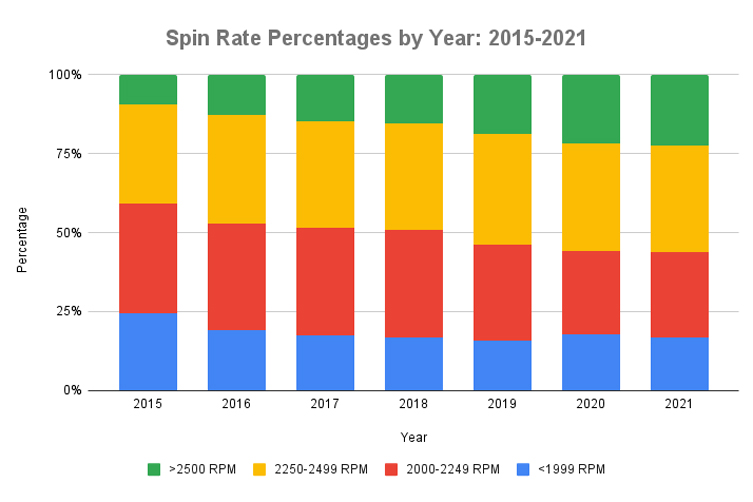
It is, of course, impossible to prove that baseball's spin-rate problem derives entirely from pitchers doctoring the baseball. Yet there's little question that the practice has become widespread in recent years. According to Eno Sarris of The Athletic, one coach even estimated that "99.9 percent" of pitchers use something on the ball.
“I understand there’s a history of foreign substances being used on the ball, but what we are seeing today is objectively far different, with much tackier substances being used more frequently than ever before," MLB Commissioner Rob Manfred said in a statement. "It has become clear that the use of foreign substance has generally morphed from trying to get a better grip on the ball into something else -- an unfair competitive advantage that is creating a lack of action and an uneven playing field.”
In context of all this, it's little wonder that MLB issued its first warning in February 2020 and then threatened increased monitoring as it took an even firmer stance—one that notably involved inspecting balls and analyzing spin rates—this March. With the latter, especially, MLB effectively challenged pitchers to give in or call the league's bluff.
Pitchers who did not take the league seriously may have underestimated the powder-keg nature of the situation. It was apparent as soon as MLB collected suspicious balls thrown by Los Angeles Dodgers ace Trevor Bauer in April that the league meant business. And after largely staying quiet in previous years, hitters finally came out swinging at baseball's sticky stuff problem.
"Nobody is speaking up for the hitters right now,” Josh Donaldson, the Minnesota Twins' veteran third baseman, told reporters earlier in June. “It's probably not going to be [taken] as serious as if it's a rookie or somebody else who doesn't have the time in the big leagues. I felt it was almost a responsibility for me to say something with this, that's how serious I think it is."
For pitchers, all these roads have led to a long overdue L in the "Getting Away with It" column. All they can do now is try to pitch as they technically should have been pitching for the last 100 years.
How MLB Screwed This Up
Even if MLB is doing the right thing, however, both its timing and its true reasoning are suspect.
Indeed, the timing of it all was at the crux of Glasnow's rant about the new rules Tuesday:
Of particular relevance is this part (h/t Tim Dierkes of MLB Trade Rumors):
“Do it in the offseason, give us a chance to adjust to it. But I just threw 80-something, 70-whatever innings, and then you just told me I can't use anything in the middle of the year? I had to change everything I'd been doing the entire season. Everything, out of the window, I had to start doing something completely new.
At least in theory, Glasnow's wish of an offseason notice might have been granted just before Opening Day. If MLB had issued a memo, say, in January in response to a certain lawsuit that was making headlines at the time, pitchers could have adjusted as needed during spring training. By the time the actual memo went out, it was much too late for that.
It's also hypocritical for MLB to suddenly take such a strong stand against grip enhancers when the league itself apparently knows there must be something more to the pitching equation than cowhide and human skin.
As Joel Sherman of the New York Post reported at the time of MLB's first sticky-stuff warning in February 2020, the league was kicking around the idea of developing a "substance that could be rubbed on the baseballs that provides desired grip without allowing a huge advantage in spin."
This March, Jesse Rogers of ESPN reported that the effort was ongoing with the league in "early stages of working to create a new, stickier substance to rub each baseball with before games."
If this is true, MLB could have waited on cracking down on the sticky stuff that's in use now until it could offer something else that was A) reasonably effective and B) totally legal. Maybe that wouldn't have been a major public-relations victory, but it would have been a fair compromise with a bloc of players that makes up more than half the league.
To this end, New York Yankees ace Gerrit Cole practically pleaded with MLB on Wednesday:
We are aligned in a lot of areas with the commissioner's office on this. ... Please, just talk to us, please just work with us. I know you have the hammer here. But we've been living in a gray area for so long. I would just hate to see players get hurt. I would hate to see balls start flying at people's head. I had a really tough time gripping the baseball tonight, especially early when it was windy. I don't really care to be inflammatory here, so I am just going to leave it at that.
As Bauer put it in NSFW terms, it's precisely because the league wanted the immediate satisfaction of a PR victory that the current mess exists:
Mind you, this might even be the charitable perspective on the real motivation behind MLB's sudden crackdown on foreign substances.
With the league's collective bargaining agreement set to expire this December, what MLB may really want is the players divided amongst themselves rather than united against the league. On a battlefield under those conditions, the league would have a clear advantage in negotiations.
So, What Happens Next?
Regardless of what happens in the long-term future with regard to the sticky-stuff conundrum and the CBA negotiations, there's a big enough question of how the new protocols are going to impact the final months of the 2021 season.
For one thing, Glasnow probably won't be the last pitcher to suffer an injury that could arguably be linked to the foreign substance crackdown. Because even if it sounded like he was speaking out of frustration, there is some science there:
It's also not just pitchers who have to worry about getting hurt.
Without sticky stuff, some hurlers are bound to have trouble throwing the ball over the plate. That could result in more hit by pitches, and that problem is already bad enough as is. This season and last season have seen batters get hit at historically high rates that were last seen in the 1890s, and too many of these HBPs have been downright scary.
One thing that could dull the pain of extra HBPs for hitters, though, is if offense spikes as pitchers struggle to retain the nastiness of their substance-aided stuff.
Even now, hitters are already heating up amid a leaguewide spin-rate decline in June. If they heat up any further, the offensive splits for the first and second half of 2021 could end up being the most extreme of any season in MLB history.
In any case, Pandora's box has been opened as MLB has basically forced its players into an all-new status quo. And the messier it gets, the easier it will be to lament that it didn't have to happen this way.
Stats courtesy of Baseball Reference, FanGraphs and Baseball Savant.
White Sox's Carlos Rodon Rips MLB for Inconsistent Punishments for Substances, Astros
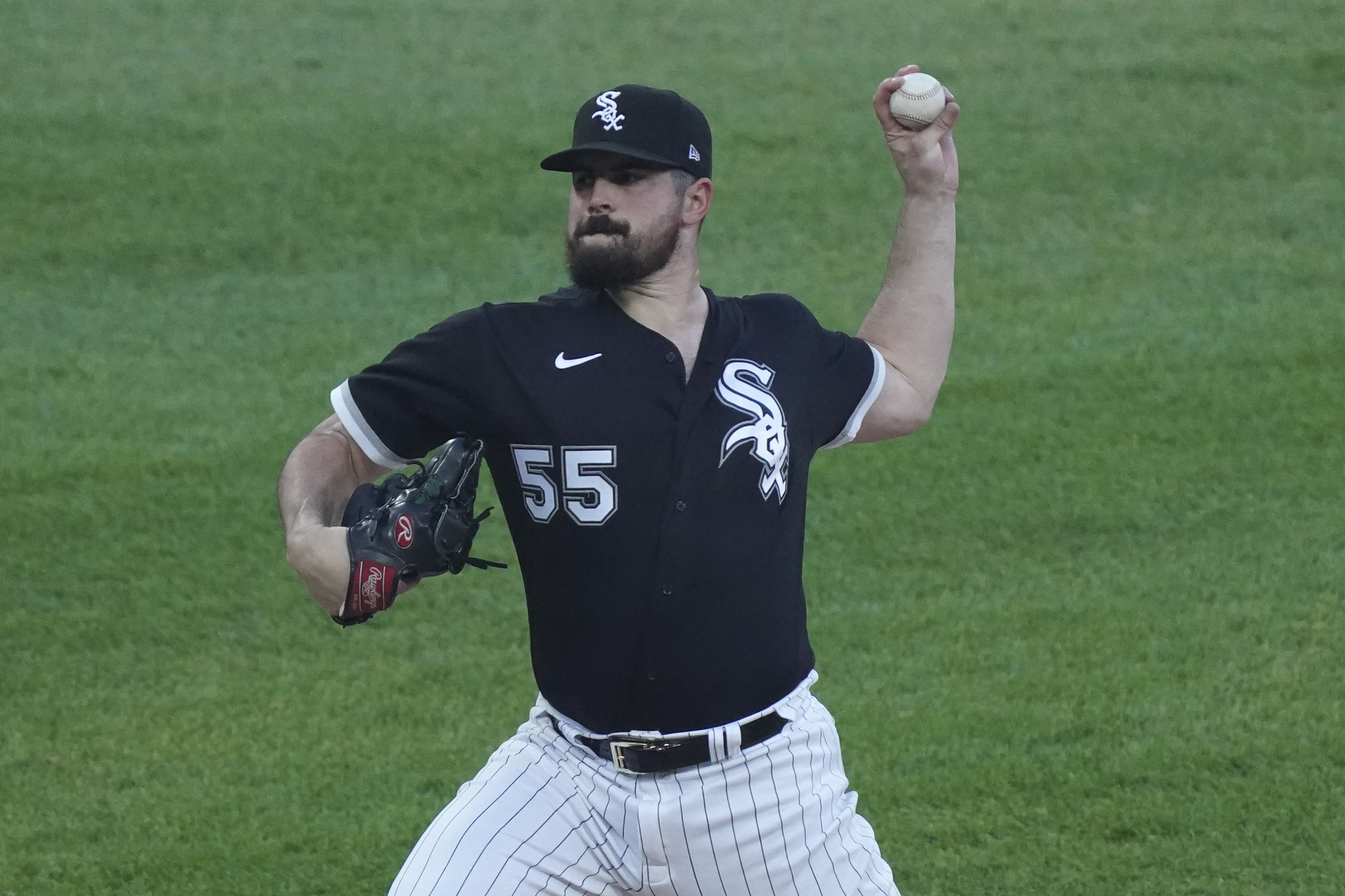
Chicago White Sox starter Carlos Rodon has been blowing away hitters all season in what's unquestionably the best year of his career. MLB commissioner Rob Manfred got a taste of that heat on Tuesday as the lefty heavily criticized a memo sent to all clubs detailing punishments for pitchers who use foreign substances to doctor the ball on the mound.
In particular, Rodon ripped the decision to suspend pitchers who get caught for 10 games after failing to punish any players on the Houston Astros for the team's sign-stealing scandal during their World Series run in 2017.
"If Rob Manfred can look himself in the mirror and say, 'Hey I'm doing the right thing,' that's fine," Rodon said. "But if you can't suspend the team that you actually knew was cheating during a playoff game, that's on you."
Manfred rather infamously declined to discipline any of the players in Houston who were involved in video-assisted sign stealing, instead opting to offer the Astros immunity in exchange for honest testimony about the scheme.
It's a decision that has players angered more than a year later—and those in Chicago have a particularly good reason to be upset.
Before MLB's investigation into Houston began with pitcher Mike Fiers blowing the whistle on his former teammates, the White Sox appeared to catch the Astros in the act during a 2017 game, as noted in Manfred's report:
Although the Astros’ players did not attempt to hide what they were doing from [manager A.J.] Hinch or other Astros employees, they were concerned about getting caught by players from other teams. Several players told my investigators that there was a sense of “panic” in the Astros’ dugout after White Sox pitcher Danny Farquhar appeared to notice the trash can bangs. Before the game ended, a group of Astros players removed the monitor from the wall in the tunnel and hid it in an office. For the Postseason, a portable monitor was set up on a table to replace the monitor that had been affixed to the wall near the dugout."
Rodon's comments will no doubt add another layer intensity as the 37-28 Astros host the White Sox for a four-game series beginning Thursday.
Yet the Cy Young candidate was far from the only MLB star to blast MLB's memo on Tuesday.
(Warning: NSFW Language)
Tampa Bay Rays star Tyler Glasnow blamed the mid-season emphasis on grip enhancers on his potentially season-ending elbow injury while Los Angeles Dodgers starter Trevor Bauer criticized MLB's rollout of the policy after it "knowingly swept this under the rug for four years".
Rodon just happened to go a bit further, making Manfred the target of his ire as pitchers across the game are asked to adjust on the fly.
White Sox's Carlos Rodon Throws No-Hitter vs. Cleveland
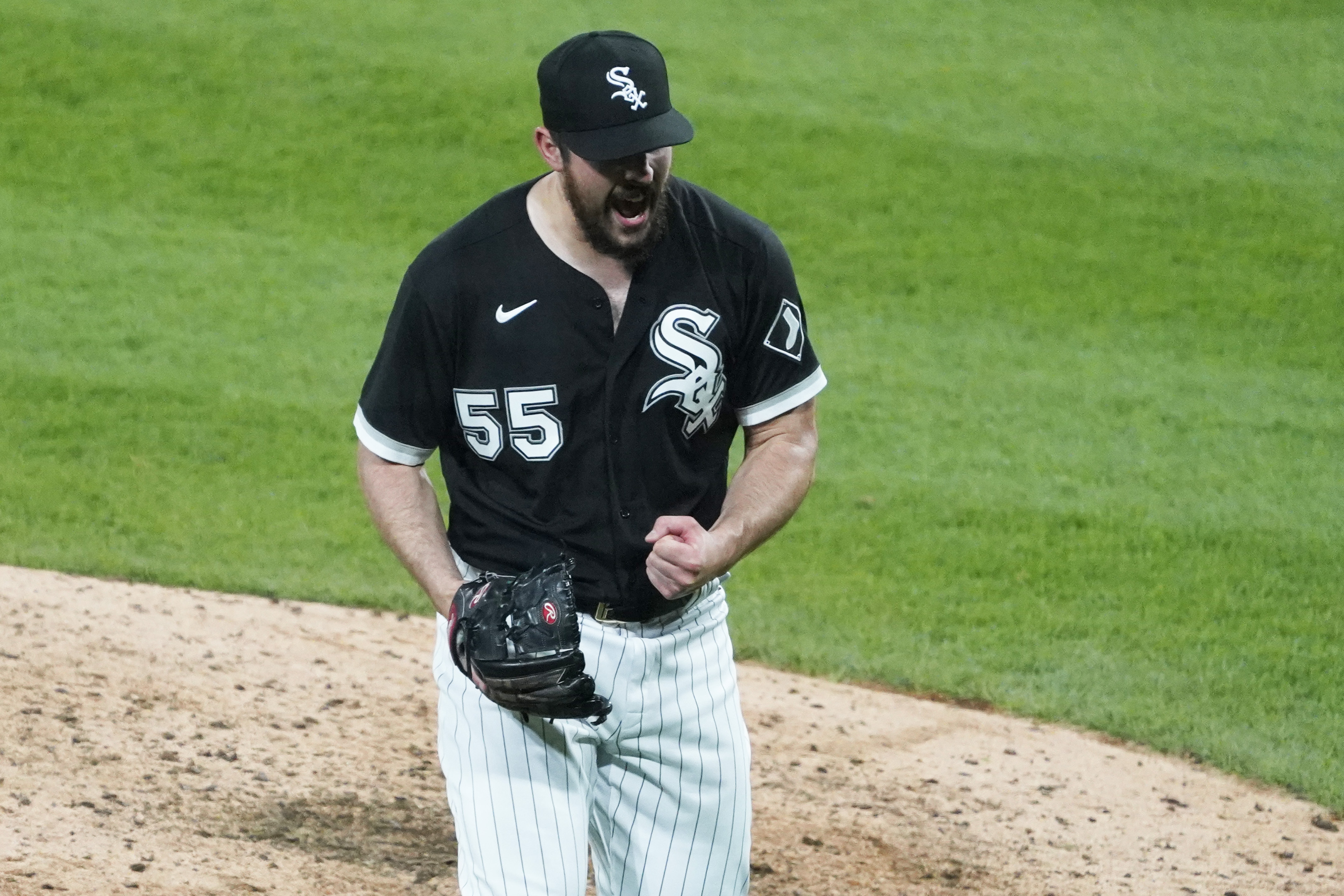
Chicago White Sox starter Carlos Rodon was four strikes away from a perfect game on Wednesday, but his effort was spoiled when he hit Cleveland's Roberto Perez on the foot with a 88.3 mile-per-hour slider in the top of the ninth.
So he settled for a no-hitter as Chicago defeated Cleveland, 8-0.
He ended the night with seven strikeouts.
The last White Sox player to throw a no-hitter was Lucas Giolito on Aug. 25, 2020. There was a time this offseason where it looked like Rodon wouldn't take the hill for Chicago at all in 2021.
The team non-tendered Rodon in December—after he appeared in 11 games between the 2019 and 2020 campaigns—but he re-signed a one-year deal with the team at the end of January.
That came after he had Tommy John surgery in 2019 and arthroscopic surgery on his throwing shoulder in 2017.
Rodon was originally slated to start against Cleveland on Monday, but an upset stomach pushed him to Wednesday's game.
After all was said and done, he could hardly believe it, either.
He has made one other start this season, throwing five scoreless innings while fanning nine in a 6-0 win against Seattle on April 5.
Rodon, who has spent all seven years of his career with the team that drafted him with the No. 3 pick out of North Carolina State in 2014, has only pitched one other complete game throughout his time in MLB—a 2-1 loss to the Los Angeles Angels as a rookie in 2015.
San Diego Padres star Joe Musgrove threw the first no-hitter of the year on Friday, as the Padres defeated the Texas Rangers, 3-0.
White Sox P Carlos Rodon Undergoes Tommy John Surgery, Expected Back in 2020
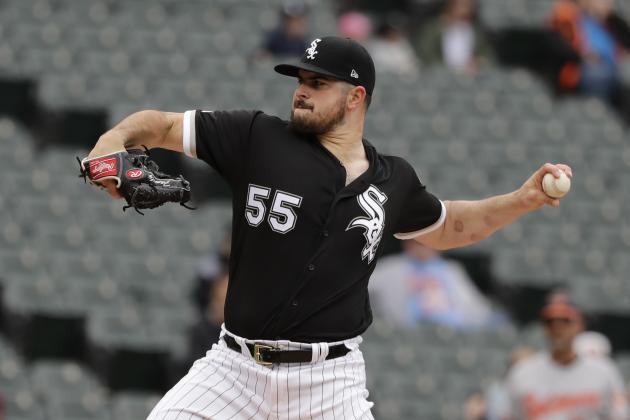
The Chicago White Sox announced Saturday that starting pitcher Carlos Rodon underwent successful Tommy John surgery on Wednesday.
The team added that Rodon is expected to return during the second half of the 2020 season.
Rodon was off to an up-and-down start this season before getting injured with a 3-2 record, 5.19 ERA, 1.44 WHIP and 46 strikeouts in 34.2 innings over seven starts.
Although Rodon's surface numbers were lacking outside of strikeouts, he had a FIP of 3.52, which suggests he was somewhat unlucky this season.
Rodon entered the big leagues as a highly touted prospect after the White Sox selected him with the No. 3 overall pick in the 2014 MLB draft out of NC State. It didn't take long for the talented lefty to make his debut, as he appeared in 26 games and made 23 starts for Chicago in 2015, going 9-6 with a 3.75 ERA as a rookie.
Injuries and inconsistency have prevented Rodon from replicating those numbers, as he posted an ERA between 4.04 and 4.18 in each of the 2016, 2017 and 2018 seasons.
Rodon made 28 starts and pitched 165 innings in 2016, but those still represent his career highs in those categories. Injuries limited him to 69.1 innings in 2017, and then he threw just 120.2 innings last season.
While Rodon is no longer a prospect, he is still just 26 years old, which means there may still be time for him to realize his potential.
He has a long road back from Tommy John surgery, but it is not uncommon for pitchers to return from the procedure even better than they were before it.
Chicago has several quality arms in its system, but results have been mixed in recent years. Lucas Giolito finally seems to be coming into his own this season with a 4-1 record and 3.55 ERA, but Reynaldo Lopez continues to struggle, as he is 3-4 with a 5.58 ERA.
Michael Kopech, who was acquired from the Boston Red Sox in the Chris Sale trade, is considered the best of them all, but like Rodon, he underwent Tommy John surgery in September and isn't expected back until next season.
With Rodon on the shelf, the 20-23 White Sox will rely on Giolito, Lopez and veteran Ivan Nova to anchor their starting rotation moving forward in 2019.
White Sox Place SP Carlos Rodon on IL; Elbow Injury Diagnosed as Inflammation

The Chicago White Sox placed starting pitcher Carlos Rodon on the 10-day injured list Thursday due to left elbow inflammation.
Pitcher Lucas Giolito (hamstring) was activated in a corresponding roster move and will start Thursday night's game against the Boston Red Sox.
Rodon is coming off a rough Wednesday outing that saw him surrender three runs on five hits and two walks in 3.2 innings. Six of his 11 outs came via strikeout, however.
After the game, White Sox manager Rick Renteria revealed the southpaw has been plagued by blisters this season.
"He has something he's always dealing with," Renteria said, according to the Chicago Tribune's Teddy Greenstein. "... A little blister develops on the finger. (The trainers) put something in it. Every single outing he has it. ... He has it under control."
Rodon is coming off a respectable 2018 in which he went 6-8 with a 4.18 ERA and a 1.26 WHIP. However, the first month-plus of the 2019 campaign has produced mixed results for the 2014 third overall pick.
The 26-year-old is 3-2 with a 5.19 ERA and a 1.44 WHIP through seven starts. He's struck out 46 batters in 34.2 innings.
He's had four outings in which he's allowed three hits or fewer and no more than two earned runs. He's also had three showings in which he has failed to log at least five innings, and he has not gotten through four frames in either of his last two starts.
Rodon, who is making $4.2 million this year, is under club control through 2021.
